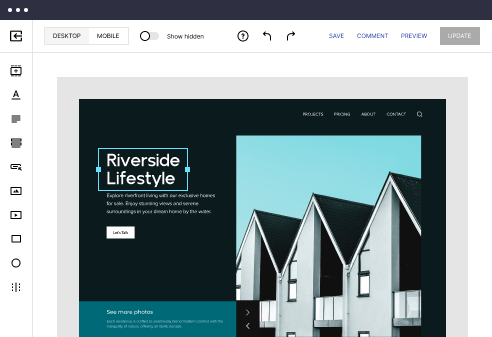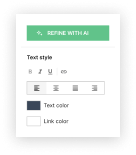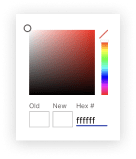
Landing page template for Python developers
Use TemplateAbout template
Attract clients and showcase your skills with style using our landing page templates for Python developers. Let's convert those visitors into clients!
Recommended templates
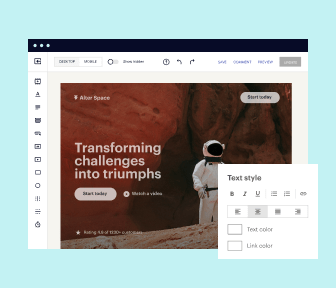
Easy to build without coding
With the intuitive drag-and-drop builder, anyone on your team can create high-converting pages without any knowledge of code or design. Make enhancements to your landing page with custom widgets using Javascript, HTML/CSS, or third-party scripts.
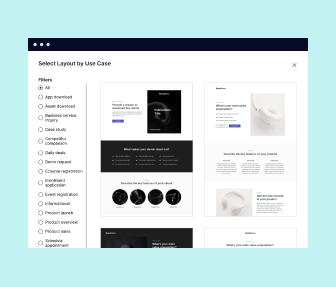
Multiple layouts for any industry and goal
Select from 500+ landing page layouts built to boost conversions across industry-specific scenarios. Customize them by adjusting fonts, adding images, and generating on-brand content with the AI assistant. Quickly scale with Instablocks® and Global Blocks that you can save, reuse, and update globally.
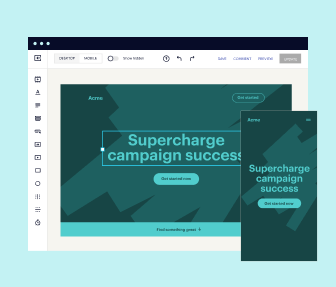
Loads fast and looks polished on any device
Every template is responsive, which means they present professionally on any device and load blazingly fast with our Thor Render Engine. You can also power them up with Google AMP technology to deliver an unparalleled mobile experience and drive higher conversions.
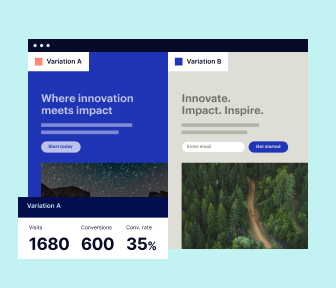
Robust analytics & experimentation
Get real-time updates and reporting across all your devices, showing the number of visitors, conversions, cost-per-visitor, and cost-per-lead. Launch AI-powered experiments, run A/B tests, and use heatmaps to analyze user behavior, then optimize your landing page to maximize conversions.
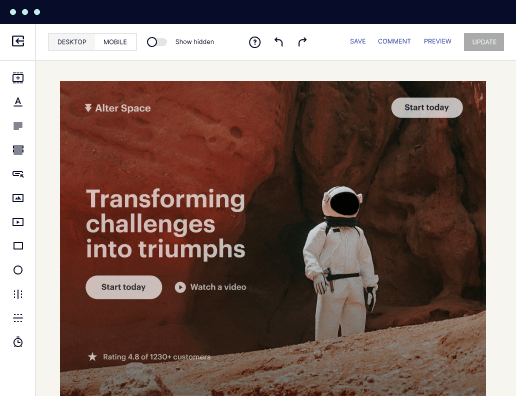
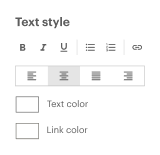
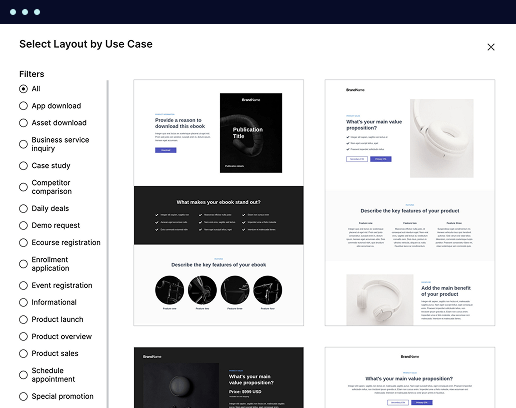
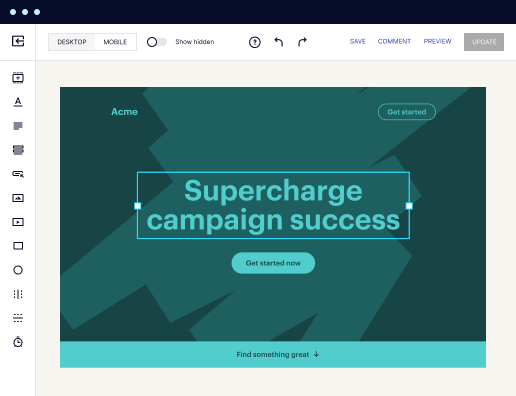
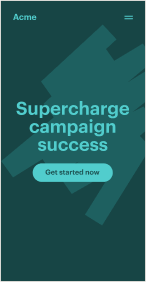
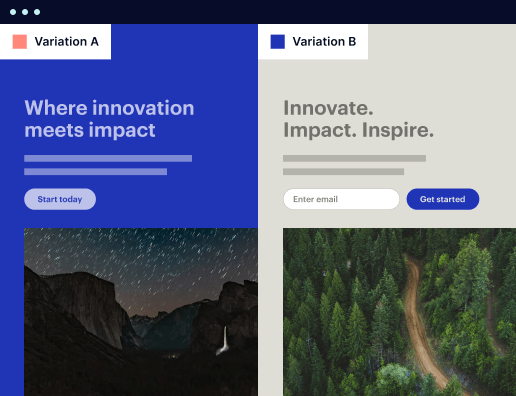
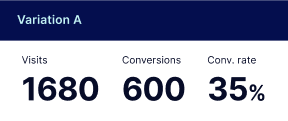
Easy to build without coding
With the intuitive drag-and-drop builder, anyone on your team can create high-converting pages without any knowledge of code or design. Make enhancements to your landing page with custom widgets using Javascript, HTML/CSS, or third-party scripts.
Multiple layouts for any industry and goal
Select from 500+ landing page layouts built to boost conversions across industry-specific scenarios. Customize them by adjusting fonts, adding images, and generating on-brand content with the AI assistant. Quickly scale with Instablocks® and Global Blocks that you can save, reuse, and update globally.
Loads fast and looks polished on any device
Every template is responsive, which means they present professionally on any device and load blazingly fast with our Thor Render Engine.
Robust analytics & experimentation
Get real-time updates and reporting across all your devices, showing the number of visitors, conversions, cost-per-visitor, and cost-per-lead. Launch AI-powered experiments, run A/B tests, and use heatmaps to analyze user behavior, then optimize your landing page to maximize conversions.
All the features you need to build landing page python
Explore more featuresLearn how to build python landing page
Frequently asked questions about python email template
Leading the way in building high-performing landing pages





Creating high-converting landing pages with Instapage
Instapage is a leading landing page and conversion rate optimization platform designed to enhance your digital marketing endeavors. Whether you're part of the marketing department in business services, tech, education, or financial sectors, leveraging Instapage can significantly streamline your campaign execution. Instapage equips you with powerful tools that fit any budget or team size, allowing you to boost your ROI efficiently.
Understanding the benefits of landing page templates
Landing page templates serve as a critical asset in your marketing toolkit. They not only save time but also ensure that the pages you create come with built-in best practices for converting visitors into leads.
- Time-saving: With over 100 ready-to-use templates, you can launch your campaigns without starting from scratch, allowing you to focus on strategy.
- High conversion rates: Instapage's templates are optimized for conversion, ensuring your marketing efforts yield tangible results.
- Customization options: Each template can be tailored to suit your branding and messaging, ensuring consistency across your campaigns.
Steps to creating your first landing page
Creating an effective landing page using Instapage involves several key steps. Follow this guide to maximize your page's performance.
- Choose your template: Start by selecting a conversion-focused template from the extensive library based on your campaign goals.
- Customize your content: Use dynamic text replacement to tailor your messaging according to your audience and improve engagement.
- Set up lead generation elements: Incorporate lead generation features like forms and calls-to-action that are strategically placed for optimal visibility.
Optimizing your landing pages for better results
Optimizing your landing page is crucial for achieving higher conversion rates. Here are some advanced techniques you can utilize:
- Conduct A/B testing: Use Instapage's built-in tools to compare different versions of your landing page and identify what resonates with your audience.
- Analyze user behavior: Implement heatmaps to understand how users interact with your landing page and refine your content based on that data.
- Personalize user experience: Use data tools to segment your audience and display customized content tailored to their specific needs.
By adhering to these strategies, you can create landing pages that not only attract visitors but also convert them effectively.
In summary, Instapage combines simplicity with powerful features to transform your landing page strategy. Whether you're a marketer in education or tech, these tools will enhance your campaign's performance.
Ready to elevate your marketing game? Sign up for Instapage today and transform your digital campaigns with high-converting landing pages!
People also ask about Landing page template for Python developers
Landing page template for Python developers
Understanding the core functionality of landing pages tailored for Python developers
Landing pages serve as focused entry points that direct users towards a specific action, typically related to conversions, like signing up or purchasing. For Python developers, these pages must not only attract visitors but also speak directly to their technical proficiency and project-oriented mindset. A well-crafted landing page can effectively showcase a developer’s work, project capabilities, and value proposition.
Customization is critical for developers. They are part of an industry that prioritizes tailored solutions over off-the-shelf products. A landing page for Python developers should reflect their unique skills and the specific projects they are passionate about. This level of customization is essential not only to showcase expertise but also to appeal to prospective clients who may seek personalized services.
Generic templates often fall short for developers who require specific functionalities and aesthetics. A disconnect can occur when a template fails to convey a developer’s technical ability or the intricacies of their offerings. Thus, a Python-centric landing page needs specialized components that highlight their programming skills while maintaining an engaging user experience.
Essential components of a landing page template
Building an effective landing page involves incorporating several key components that resonate with the target audience. First and foremost, the header and navigation elements should be intuitive, allowing visitors to easily navigate the page and access essential information. The headline should be engaging and instantly communicate the primary benefit or service offered.
Crafting an engaging headline: Use clear and compelling language that highlights what solutions you provide to your audience, particularly in relation to Python development.
Appropriate call-to-action placement: Effective CTAs guide users towards taking specific actions, such as signing up for a newsletter or requesting a demo, and should be visible and persuasive.
Visual design flexibility is another critical component. Choosing color schemes that align with a developer’s brand identity not only enhances aesthetics but signifies professionalism. Additionally, properly utilizing icons and graphics can break up text and visually emphasize core concepts.
Content structuring is vital to communicate the value proposition of the landing page. Clearly stating what Python developers gain from working with you or using your product builds immediate credibility. Testimonials and case studies showcasing successful applications of your skills further establish trust and reliability with potential clients.
Value proposition: Clearly articulate the benefits Python developers can experience, whether it's increased efficiency or access to innovative solutions.
Testimonials and case studies: Display quotes from satisfied clients along with detailed examples of past projects to enhance trustworthiness.
Finally, responsive design elements cannot be overlooked. With a significant portion of users on mobile devices, optimized experiences across all screen sizes are imperative. Failing to implement responsive design can lead to frustration and higher bounce rates.
Enhancing functionality through JavaScript events
Incorporating JavaScript into landing pages allows for a more interactive user experience. Understanding how to use `document.addEventListener` enables developers to handle various user actions effectively. Common events include clicks, hovers, and focus changes, which can contribute to a more engaging website.
Examples of common events: Implement click events on buttons, hover effects on images, and focus events on input fields to enhance interactivity.
Managing the lifespan of DOM elements is essential for performance. By utilizing the `DOMContentLoaded` event, developers can execute scripts effectively once the DOM has fully loaded, ensuring interactive elements are enabled without delay.
Setting up interactive elements: Delay initializing scripts until after the DOM Content Loaded event fires to prevent unnecessary delays in user interaction.
Dynamic content loading significantly improves user experience. Techniques like AJAX and Fetch APIs allow for real-time data injection relevant to app users. This not only keeps the content fresh but also increases engagement as users receive personalized updates.
Hands-on development of a Python-centric landing page
Creating a landing page template requires structured planning and execution. First, you'll need to set up your environment with necessary tools, libraries, and frameworks. Libraries such as Flask or Django can serve as the back end for serving your landing page efficiently.
Environment setup: Choose Python frameworks (like Django or Flask) and deploy them on a suitable hosting service to support your webpage.
Integrating the Python back-end with a JavaScript front-end is crucial for creating interactive functionalities. Data exchange between the front-end and back-end ensures that users receive dynamic content and can interact seamlessly.
Utilizing CSS frameworks: Consider using established CSS frameworks like Bootstrap or Tailwind CSS to achieve a developer-friendly UI that aligns with modern design standards.
Integrating JavaScript libraries: Libraries such as jQuery can be used for enhancing UI interactions and facilitating AJAX requests.
Focusing on visual components through contemporary design frameworks ensures that the landing page feels fresh and approachable. Consistent design elements are critical for sustaining user interest and driving conversions.
Best practices for optimizing Python developer landing pages
To ensure your landing page reaches its intended audience effectively, implementing SEO strategies is indispensable. Conducting keyword research that focuses on Python development terms allows your content to rank higher in search engine results, attracting more organic traffic.
Meta tag optimization: Use relevant keywords in meta tags and ensure images have descriptive ALT text to improve visibility.
A/B testing is an effective way to refine design and copy elements. By understanding KPIs, such as conversion rates, page views, and user engagement, developers can make informed adjustments that enhance performance.
Tools for A/B testing: Various platforms allow for easy setup of experiments, helping you to identify which design resonates best with users.
Post-launch analytics and feedback are crucial for measuring success. Utilizing tools like Google Analytics enables developers to track user behavior and gather insights that inform future iterations of the landing page. Actively soliciting user feedback regarding their experience can reveal areas of improvement and help in crafting a better user journey.
Addressing common challenges in landing page design
Developers often encounter challenges related to speed and performance. Optimizing page load times is essential to keep users engaged; this can be achieved through image compression and code minification, ensuring that the landing page remains fast and efficient.
Hosting and server management: Choose reliable hosting solutions and manage server settings for optimal page performance.
Security is another critical concern, especially when handling data through online forms. Implementing best practices for securing data collection forms, such as using HTTPS and sanitizing inputs, becomes necessary for building trust with users.
Keeping libraries up-to-date: Regularly update libraries and frameworks to protect against vulnerabilities and potential risks.
Future trends in landing page development for Python developers
Emerging technologies play a significant role in shaping the effectiveness of landing page templates. One significant trend is the integration of artificial intelligence and machine learning for predictive personalization. This level of customization can enhance user experience by offering tailored content suggestions based on user behavior and preferences.
Automating content suggestions: Machine learning algorithms can analyze user interaction patterns to personalize content delivery.
Progressive Web Apps (PWAs) are rapidly gaining traction in web development due to their ability to combine the best of web and mobile applications. They provide users with fast load times and offline capabilities, making them an attractive choice for developers to consider.
Advantages of PWAs: Users benefit from seamless experiences that mimic app interactions while retaining the accessibility of a website.
Additionally, evaluating frameworks like Flask and Django for landing page development is essential. These frameworks offer various features that can enhance scalability and housekeeping aspects, which are crucial for any growing project.
Engaging the community for continual improvement
Collaboration with other developers is invaluable for honing landing page strategies. Hosting webinars and live coding sessions can facilitate knowledge-sharing and inspire ideas that push the boundaries of conventional design.
Creating forums: Establish dedicated online spaces for developers to troubleshoot common issues and exchange valuable insights.
Source control and version tracking using GitHub Projects can streamline teamwork, helping developers manage their contributions efficiently. Maintaining comprehensive documentation about the project enhances future development endeavors, ensuring that all team members are aligned and aware of the project’s history and evolution.
Crafting an impactful narrative through distinctive copy
Writing compelling copy targeted towards Python development is vital for connecting with your audience. Understanding their pain points and demonstrating solutions through clear narratives can build rapport and trust. Employing effective storytelling techniques can emphasize how your offerings address specific needs, motivating potential clients to take action.
Narrative techniques: Consider leveraging personal stories and case studies to illustrate success and build credibility.
Integrating visuals along with copy is important for enhancing engagement. Strategically using videos and infographics can convey complex information more effectively, while finding the right balance between text and visuals keeps the reader interested and informed.
Ready to skyrocket conversions?
Supercharge your ad campaigns with high-performing landing pages
Get started